
TARGET 070124
SINKHOLE!!!
The ground is falling! The ground is falling!
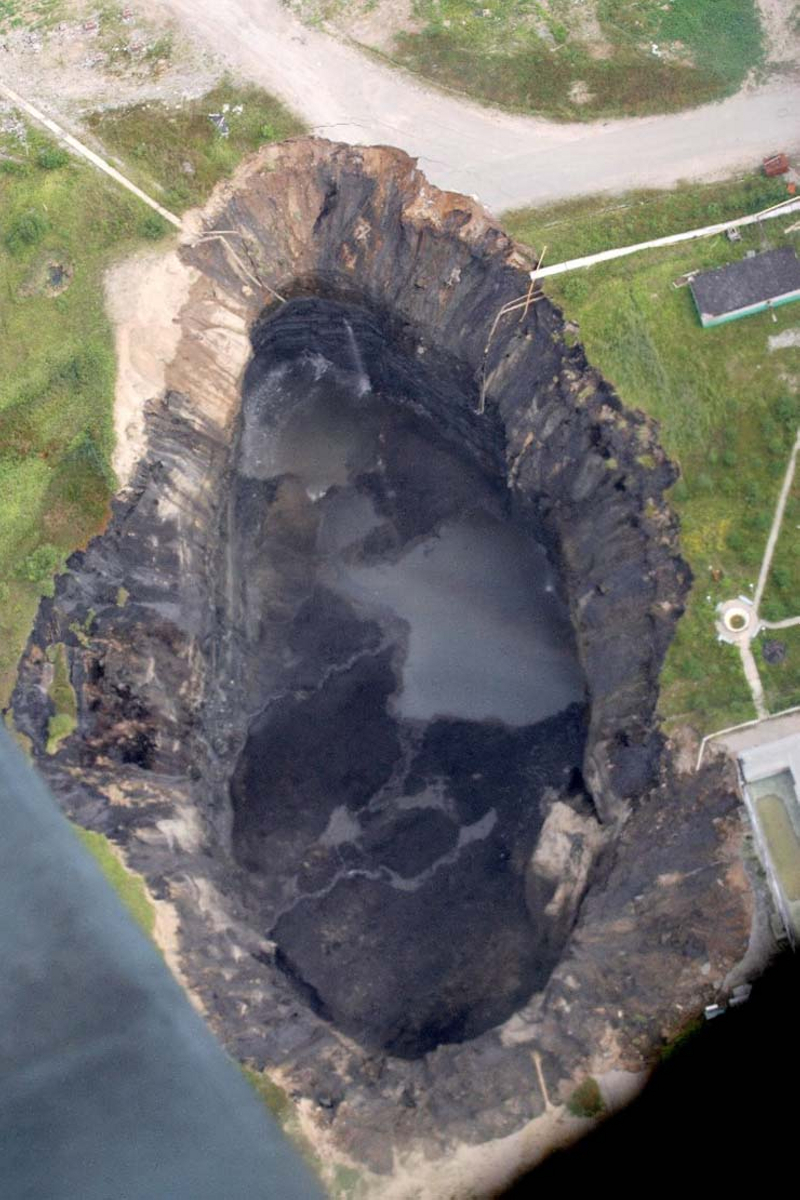
The sinkhole threatening BereznikiWhen you dig a hole into the ground, someone might fall in. But when you dig a hole that goes out UNDER the ground, the ground can fall in. That has been the sad experience of many miners and the families of miners. It has also been the sad experience of many towns that have been built right over the mine shafts. When the ground falls in, anything built on that ground falls in, too.
Luckily, even though the town of Berezniki, Russia was built over the mines almost a century ago, the lesson was learned, and when the ground started falling in, the mines were cleared and nothing but property sitting on top of the ground was lost.
Dmitry Rybolovlev, the Russian fertilizer tycoon who in February bought the most expensive apartment ever sold in New York City ($88 million) may have done a lot for real estate values there, but in Berezniki, where he made his fortune, not just property values, but properties too, have fallen through.
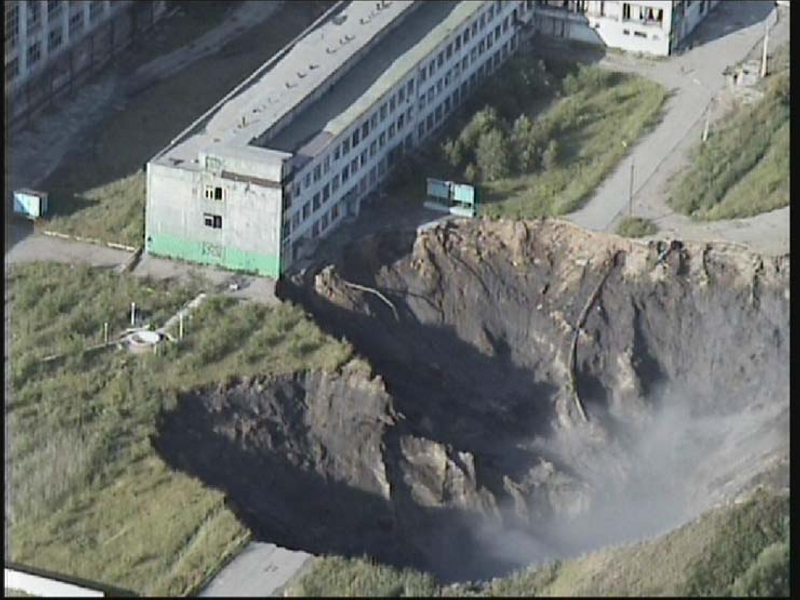
About to swallow a buildingSinkholes are common hazards in mining regions, plaguing areas where miners have burrowed into layers of soluble minerals and accidental floods have followed. But in Berezniki, as often happens with many factors of present-day life in Russia, the problem has been magnified by past practices in which safety was not always the foremost concern.
Berezniki, now a city of 154,000, began as a "gulag" - a labor camp - that was built directly over the mine where the prisoners worked. The Soviet policy was a practical one at the time, placing camps as close as possible to the work areas. But then, the city grew up around the gulag's location, and is now sitting on ground that is collapsing.
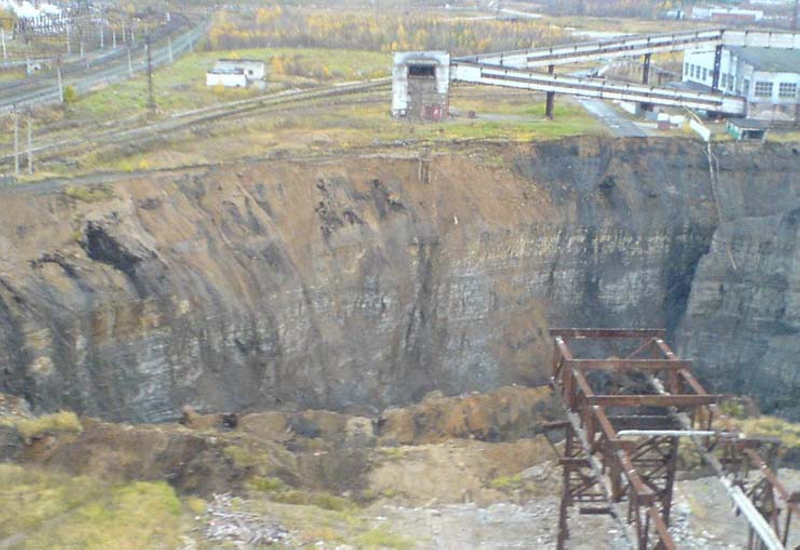
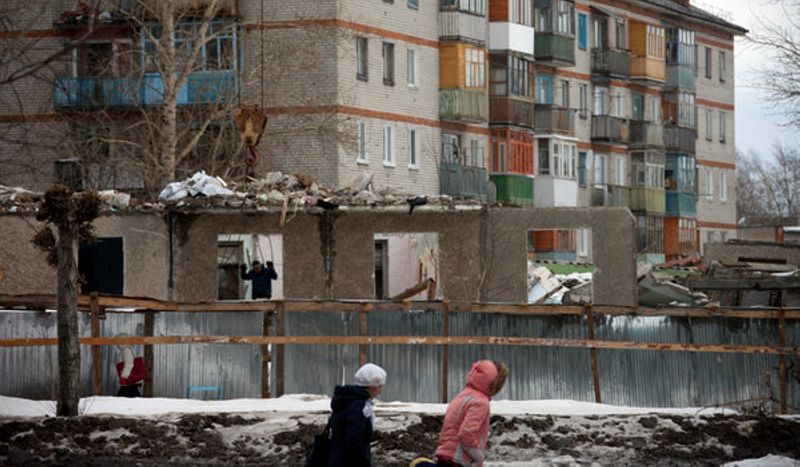
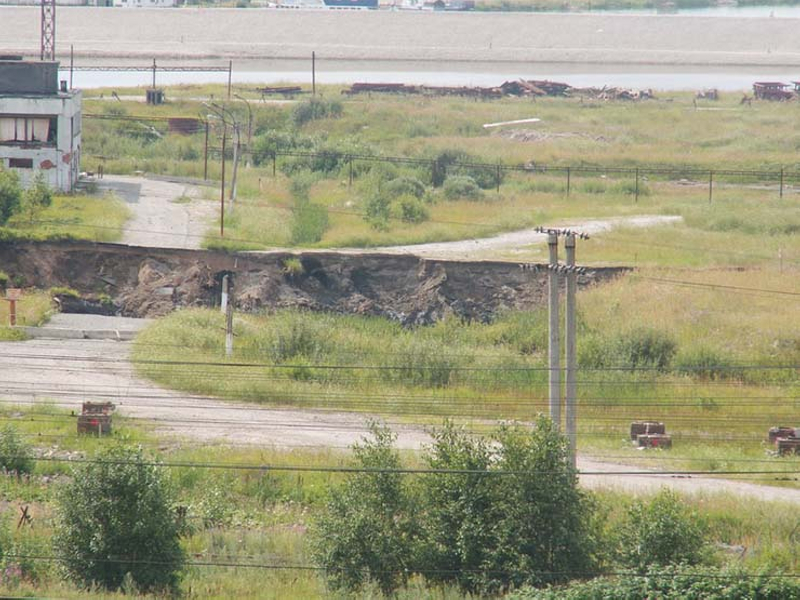
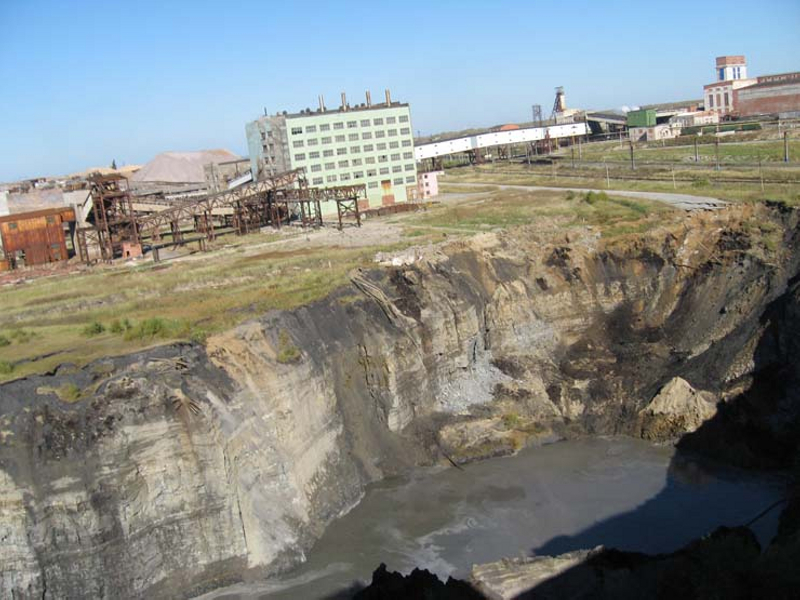
The sinkholes are appearing throughout the cityThe mines are vast and form a spiderweb pattern under the city, so homes, apartments houses, shopping areas, factories, parks and just about every place in town are potentially destined to cave in.
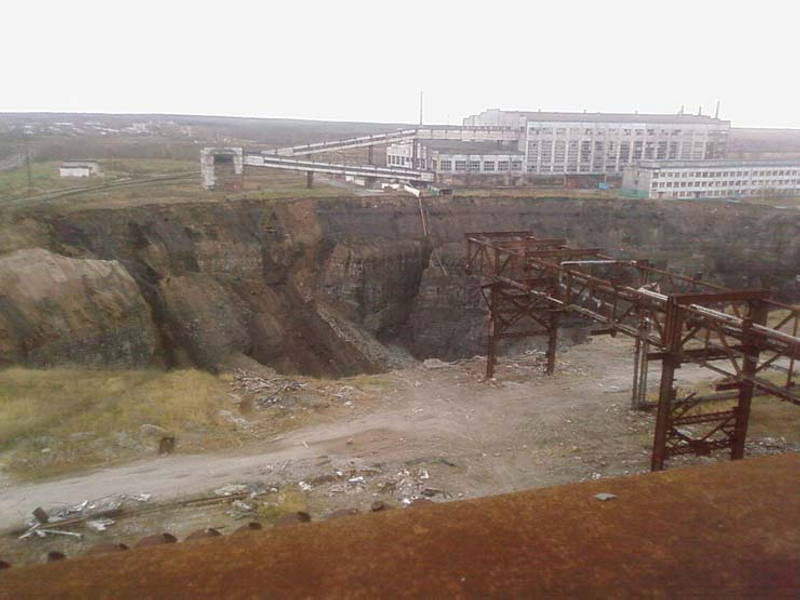
The GrandfatherThe largest hole opened in July 2007. Experts at Uralkali say it may be the largest manmade sinkhole in the world. Residents, who have given all the holes nicknames, call it "The Grandfather."
The municipal authorities were compelled to evacuate about 2,000 people from nearby apartment blocks, at great expense. The Grandfather is now 340 yards wide and 430 yards long, and it plunges right to the salt strata underneath the city. 780 feet, or the equival ent of 50 stories, straight down. It partly destroyed a warehouse near its edge.
A government commission cleared Mr. Rybolovlev, the fertilizer tycoon, of wrongdoing, blaming past unsafe practices for the sinkholes. But right after "The Grandfather" appeared, Mr. Rybolovlev, sold the mine, washed his hands of any financial responsibilities, and now lives in Monaco.
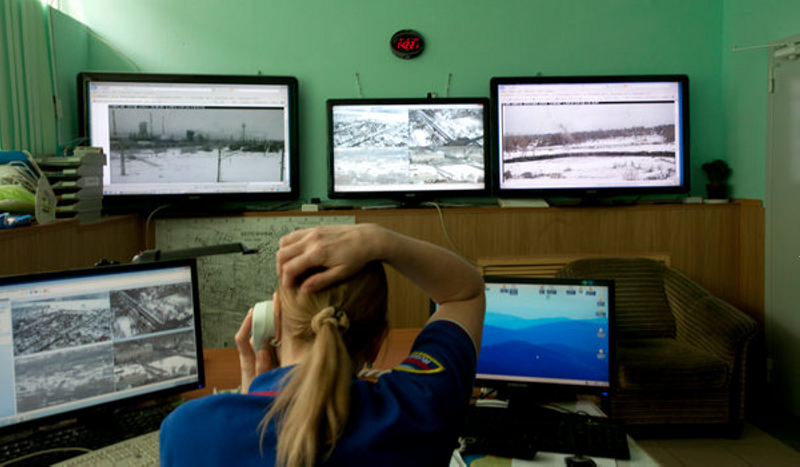
Monitoring the citySo, while some cities have cameras all over town, monitoring the activities of cars and people, Berezniki has a system of cameras all over town, monitoring the ground. The monitoring station operates 24 hours a day, 7 days a week, to warn people of any potential new sinkhole activity that might swallow up their homes, their workplaces, or streets on which they may normally drive.
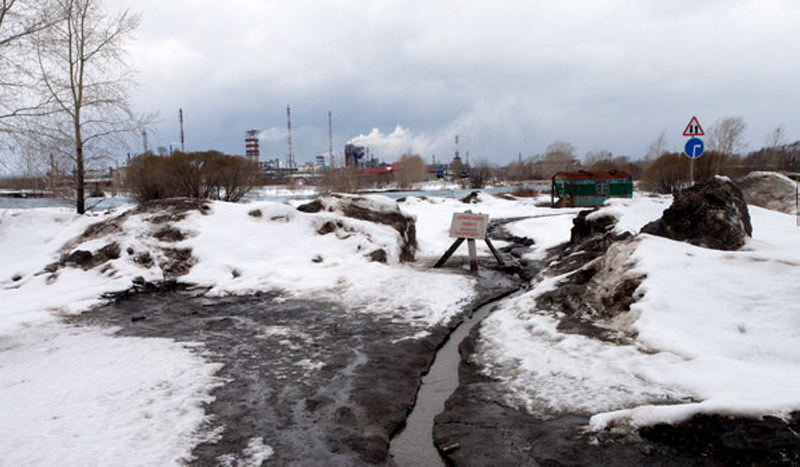
Even out, away from the city.The mines are extensive, and even out, away from the city, signs are posted whenever a crack opens in the ground. With rainwater and melting snow in the Spring softening the ground, it is inevitable that the ground will cave in at that spot and swallow up anything or anyone who risks being there.
But even with the monitoring system and the care the citizens take to mark every place of danger, the inhabitants of Berezniki are still in potential danger. A sinkhole can open up slowly, giving them time to get themselves and their possessions out of harm's way, but it may also open immediately, as a whole section of mine caves in without warning.
"We will fight the holes with science," the mayor, Sergei P. Dyakov, said in an interview. "The city will not need to relocate," he said, "because engineers believe that no new holes will open. Much of the mine was filled before the flood," he said, "and the sinkholes occurred in an anomalous area that had not been filled in."
But fill dirt is not as strong as the bedrock and it either shrinks as it compacts or washes away, so federal officials and company executives are debating whether to relocate the entire city to the opposite bank of the Kama River, where the bedrock is solid. For most of the city's inhabitants, that seems like the only possible solution.
About 12,000 of the residents have simply moved to other cities. Meanwhile, the remaining residents wait and hope that the government will do something for them. Some are even eagerly looking forward to the idea of getting new homes - even government-built ones - where they can live and sleep soundly at night without worrying about the ground falling away underneath them.FEEDBACK MAP
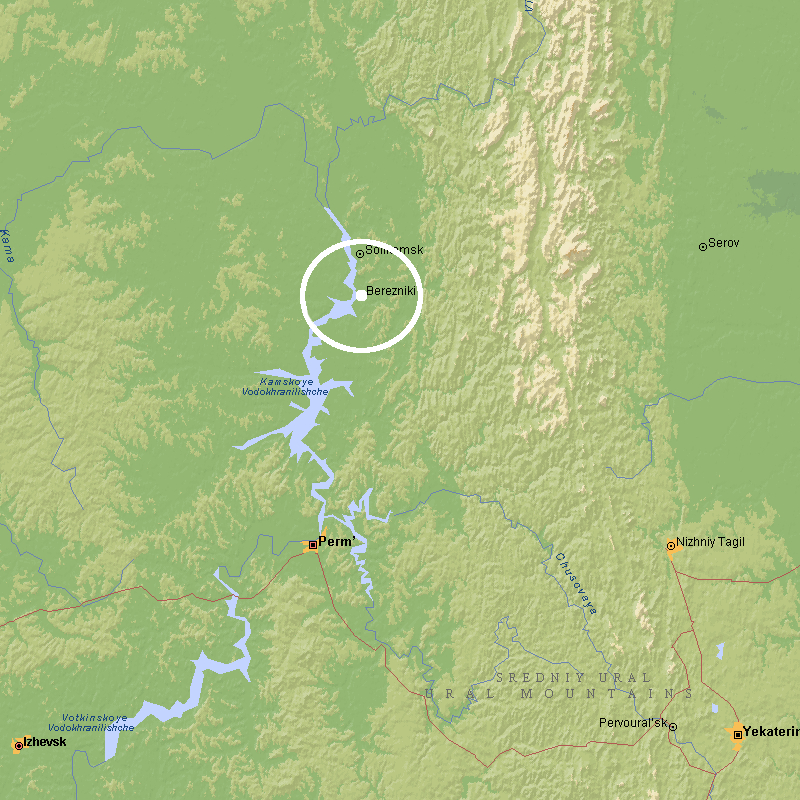
If you got impressions for which this feedback is insufficient, more information,
pictures and videos can be found at the following web sites:
New York Times website
Wikipedia (city data)
English Russia website